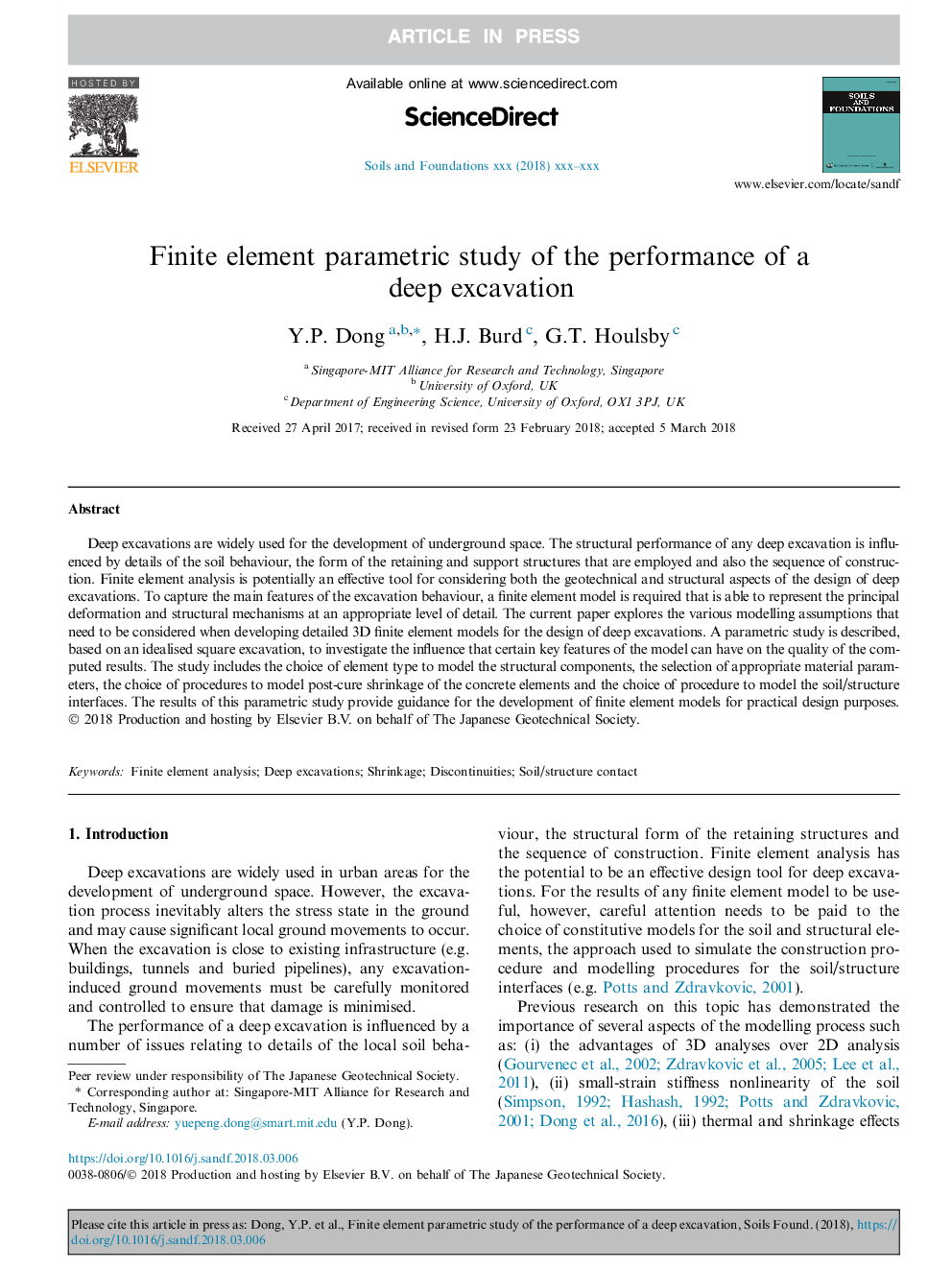| Article ID | Journal | Published Year | Pages | File Type |
|---|---|---|---|---|
| 6773770 | Soils and Foundations | 2018 | 15 Pages |
Abstract
Deep excavations are widely used for the development of underground space. The structural performance of any deep excavation is influenced by details of the soil behaviour, the form of the retaining and support structures that are employed and also the sequence of construction. Finite element analysis is potentially an effective tool for considering both the geotechnical and structural aspects of the design of deep excavations. To capture the main features of the excavation behaviour, a finite element model is required that is able to represent the principal deformation and structural mechanisms at an appropriate level of detail. The current paper explores the various modelling assumptions that need to be considered when developing detailed 3D finite element models for the design of deep excavations. A parametric study is described, based on an idealised square excavation, to investigate the influence that certain key features of the model can have on the quality of the computed results. The study includes the choice of element type to model the structural components, the selection of appropriate material parameters, the choice of procedures to model post-cure shrinkage of the concrete elements and the choice of procedure to model the soil/structure interfaces. The results of this parametric study provide guidance for the development of finite element models for practical design purposes.
Related Topics
Physical Sciences and Engineering
Earth and Planetary Sciences
Geotechnical Engineering and Engineering Geology
Authors
Y.P. Dong, H.J. Burd, G.T. Houlsby,
